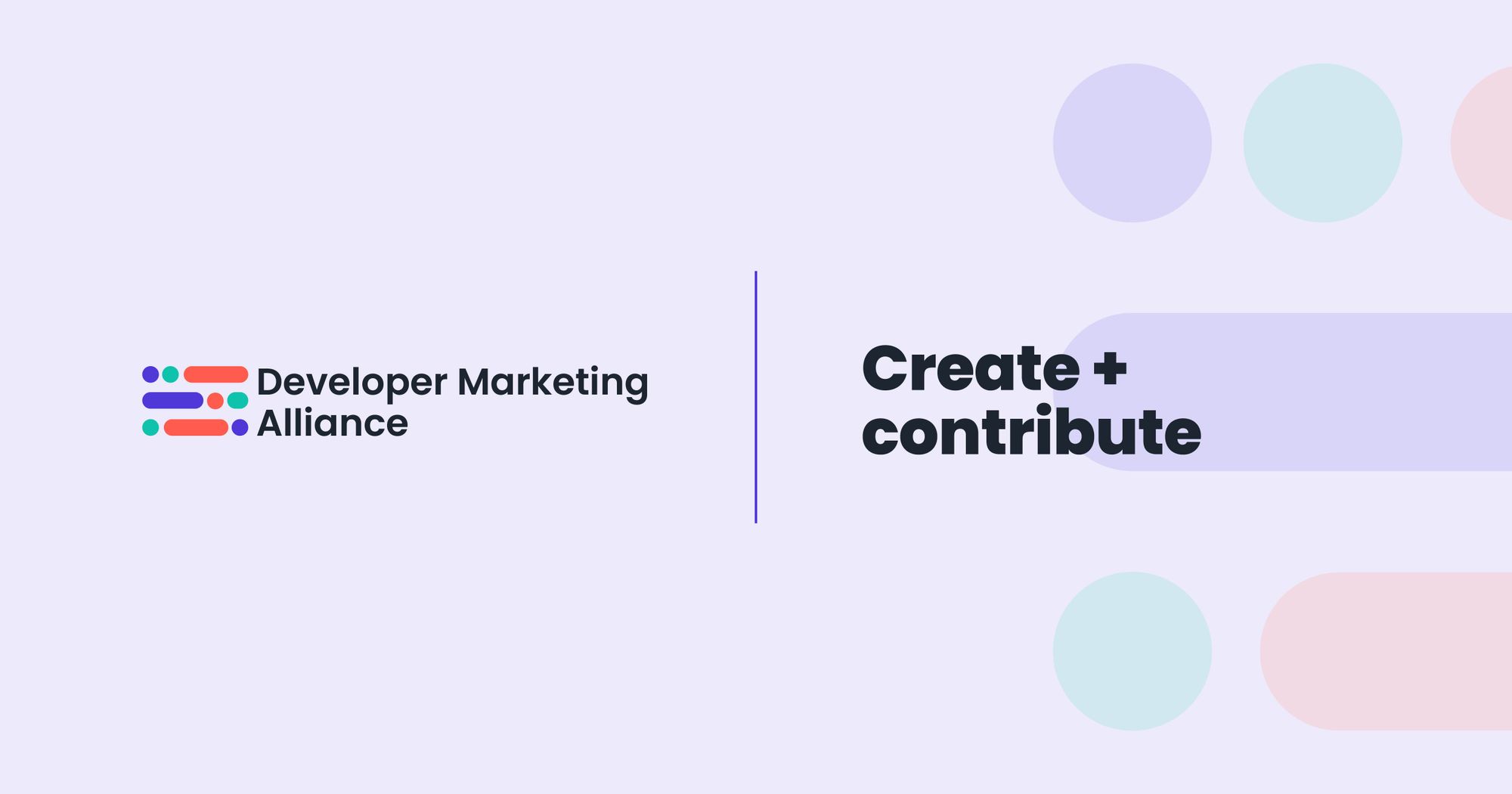Have you ever wondered how to get more developers to use your products? The answer may be simpler than you think: developer evangelists equal more eyeballs on your offerings. At least, that’s the idea…
After all, marketing to developers is a completely different beast, so getting the word out there about your products and services may not be as straightforward – but it can become easier if someone else is helping you promote them!
So, today, we’re taking a look at:
- How important it is to have a developer community in place
- PMMs and community managers: a match made in developer heaven
- The structure of a developer community
- How can developer champions help with GTM strategies?
- A win-win for everyone involved
The importance of a developer community
We’re lucky to have an outstanding developer community at MuleSoft. It’s not just extremely vibrant but also drives a lot of evangelism and has over 40 community events every month. The community creates a lot of content by itself and generates plenty of peer-to-peer support on a daily basis.
Just to give you an idea of the numbers here:
- We have a physical presence in over 140 cities across 35 countries.
- We count more than 500 champions who evangelize on our behalf on a regular basis.
But how do we generate this evangelism and how do we surf the wave to further promote our product launches?
We thought we might start with a success story – who doesn’t love those?
At MuleSoft, we were recently shooting for around 100% growth in the number of apps deployed for a particular launch but, due to our community-led evangelism and developer champions, our mind was blown (and our initial expectations surpassed) when we saw our product adoption grow over 170%.
Of course, we know this wasn’t just down to developer champions. There’s a lot behind-the-scenes that happens with the entire marketing team and the organization. Still, there’s no denying that, by focusing on building enablement kits and on developer meetups (and encouraging community-led content creation), our champions played a huge part in this success.
The same was true for our other product launches that were developer-related.
How PMMs and developer community managers work together
Both of us are focused on not only collaborating with one another but also on partnering very closely with our community to make sure all our goals are aligned – and to ensure our developer champions can have the greatest impact.
We also have individual KPIs we have to meet:
I typically consider the number of monthly active users on our platform and the number of apps deployed in a specific environment. I also execute the go-to-market strategy for new products and the launches of those products, as well as their enablement. – Jason Johl
As a developer community manager, I look at the number of developer champions who evangelize for us and that we can nurture over time to make really strong advocates for MuleSoft. I also take meetups into account because they really showcase the vibrancy of our community.
So, my main focus is to source champions who are knowledgeable on the platform and are willing to build their brand. Because, if they want to build their own brand, they’ll also want to be out there evangelizing for us, and be visible on MuleSoft sites. – Sabrina Marechal
So, how do we work together? Our happy places might differ slightly because of our roles at MuleSoft, but we share the same goals.
For example, a PMM might see a developer champion as an evangelist, but a developer community manager would see product launches as opportunities to make more evangelists. These launches help champions to learn more about the product, engage with us, and really go out there and spread the word for us, which lets us have a deeper relationship with the community.
In the end, though, it’s all about our developer champions evangelizing new product launches and scaling out our message and our enablement. Having the whole community pitch in, instead of just relying on one or two people, helps us to actually make an impact.
How is MuleSoft’s developer community structured?
Our developer community has several tiers but, when it comes to product launches, we focus on the top three tiers, which are the most engaged and knowledgeable members.
This means:
- The meetup leaders – these are the volunteers who organize MuleSoft events on a regular basis, either locally or online; we have about 350 meetup leaders.
- The mentors – they’re engaged on several channels, so they can do meetups, they can write content to help others on the forum, and are present in multiple places.
- The ambassadors – the top tier of the pyramid is all about MuleSoft ambassadors, who are the MVPs of the community, the most recognizable ones, and have a really strong voice.
Developer champions help with GTM strategies
There are two ways our developer community can help when it comes to our go-to-market strategy:
Inbound
This is all about the product development process and getting crucial feedback from our community members, which we do in a number of different ways. For example, we’ll run surveys and focus groups with the members of the community, and also rely on the personal relationships we develop with our champions.
Let’s dive in a little bit deeper into the inbound side. We work with product marketers a lot and often work together to build a hypothesis or test a question; to get better results, we actually use the community as input to answer questions, whether by sending out a survey or by setting up a feedback focus group (five to twelve people).
If we wanted to present quantitative metrics (say, for example, that you’re going to be presenting at a conference and want to use percentages, such as, “a number of our community members think XYZ”), then a survey is probably the best option here.
On the other hand, if you’re looking to know more about someone’s experience with a platform or their pain points, a focus group or even a Zoom meeting can be a quick way to get people’s opinions or showcase a new product or demo.
A dedicated workspace that lets us interact with our community, like Slack, is also incredibly useful to pick someone’s brain quickly.
All this allows us to:
- Help our product managers,
- Understand the landscape of our developer persona more easily,
- Build a more efficient go-to-market strategy,
- Work on the strategy of our product development process.
Outbound
Our developer community also supports our launches by organizing meetups where they educate the attendees on our new products and on any potential updates, building tutorials and writing blogs (either on our website or on theirs), creating videos, supporting our promotions on social media, and also speaking at third-party events.
They’re microphones to the world, spreading the word on what we do.
We start with a quarterly plan where we figure out our product launches together (PMM and community). We also discuss details, such as what we’re going to launch and when, how much support we need from the community, etc.
Then, we engage our champions a week or two before the launch, which includes scheduling Q&A sessions on our online platform. By doing this, we can answer any questions that may pop up and provide our champions with a content piece that includes a slide deck with a talk track, a cheat sheet, screenshots of our products, and so on – basically, everything they need to know to be ready to evangelize for us!
As we approach the launch date, we see our champions starting to host events and advocate on social media, for instance, but all these activities last a few months post-launch. This means our champions don’t just stop their evangelism as soon as the product is launched.
In short, this is a long-term game for us, since our developer champions will be out there setting up talks and answering questions about our products on socials, etc., for a long time.
The result: everybody wins!
Focusing both on inbound and outbound strategies is truly a win-win scenario for everyone, as they’re good for:
- The product marketing team (who gets GTM input and feedback, product evangelism, and adoption growth)
- The community team (who sees a lot of growth and develops its P2P support)
- The community members (who get exclusive knowledge, boost their reputation in our ecosystem, see personal growth and get more recognition from their peers by setting themselves up as experts)
We’ve had a lot of success partnering both PMM and community, and find that this helps us to drive product adoption with developer champions.
About us and MuleSoft
We’re Jason Johl and Sabrina Marechal, Product Marketing Manager and Sr. Manager (Developer Community) at MuleSoft.
The company is actually a part of Salesforce, but we have our own standalone business unit and operating function. MuleSoft provides the world’s number one integration and API platform – our flagship is the Anypoint platform, which helps our customers to develop integrations and APIs faster.
It’s important for us that we work well together and that our goals align so we can then enable those who are going to help us spread the word about our products.
Not only do we do inbound collaborations by working together on products as they’re being developed, but there’s also the outbound side of the house to consider, which means we use community champions who help advocate and scale our product message and product marketing.
Ultimately, we feel this results in a win-win scenario for our developer champions, our product marketing, and our community marketing.
Based on a talk by Jason Johl, Product Marketing Manager, and Sabrina Marechal, Sr. Manager, Developer Community at MuleSoft.
Want to learn more about developer marketing strategies that work? Why not sign up for our newsletter or join our community today on Slack to network with other marketers?
You can also write for us! Check out how you can get involved:






